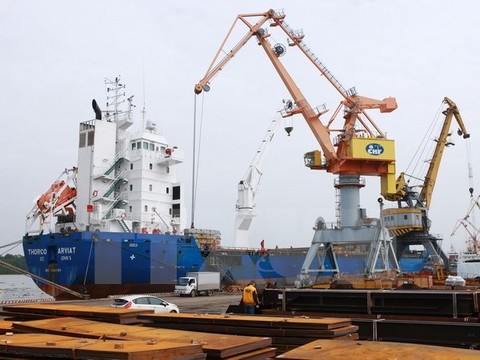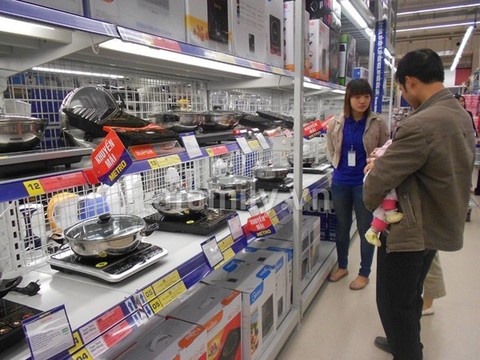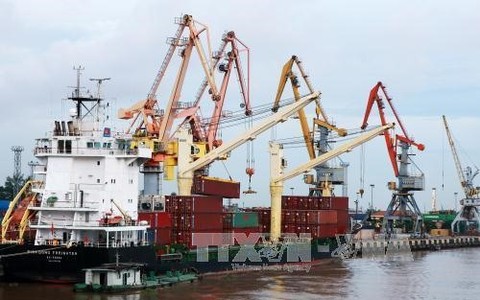Sea transport posts positive growth
Sea transport posts positive growth
The maritime transport sector achieved positive growth last year, but the international logistics industry faced many challenges, according to the Viet Nam Maritime Administration (Vinamarine).

At a recent conference about the maritime transport sector, Vinamarine said the shipping volume of Vietnamese vessels last year totalled 130.9 million tonnes of cargo, up 6 per cent from 2016.
Domestic ships are now undertaking nearly 100 per cent of domestic sea shipping, except for shipping of LPG and bulk cement.
Since 2014 to the end of 2017, river-sea compatible ships transported 36.2 million tonnes of cargo.
Last year, they completed 22,000 shipments, an increase of 67 per cent year-on-year. Shipping volume was 18.5 tonnes of cargo, up 56 per cent from 2016.
Bui Thien Thu, deputy head of Vinamarine, said the country as of December last year had a total of 1,594 marine transport vessels.
Of these, there were only 40 container ships, accounting for 5 per cent of total capacity.
“This is the reason why our marine vessels run mainly on short-distance routes like Southeast and Northeast Asia and hold only 10 per cent of Vietnamese export-import shipping by sea,” he said.
He said Vietnamese seaports achieved high growth last year with shipping volume via all seaports totalling 536.4 million tonnes of cargo, up 17 per cent year-on-year.
The number could have been higher but there was a shortage of “a logistics value chain”, he added.
At a recent seminar on Vietnamese logistics organised by Thoi bao kinh te Viet Nam (Viet Nam Economic Times), Thu said Vietnamese inland ports, or Inland Container Depots (ICD), are logistics centres but do not link with railways, domestic waterways and airways, which increases costs.
Logistics firms are facing difficulties such as low quality seaports, low rate of seaport and loading and unloading charges, and lengthy administrative procedures.
He said though the country has 1,300 logistics and maritime services companies, most of them partner with or provide logistics services for another firm.
Foreign logistics companies are still the main players in the field, he added.
Deputy Minister of Transport Nguyen Van Cong said the Cai Mep-Thi Vai seaport received for the first time vessels weighing 200,000 tonnes in 2017, a significant event as the route is now considered an important international seaport.
But he emphasised the importance of developing the route into a logistics hub.
“At the moment, HCM City has 6 ICDs, Binh Duong has two and Dong Nai has three,” he said. “Their locations are convenient for supporting transport of export-import goods from seaports. This is very important for the development of nearby seaports in the region. But it’s necessary to strengthen connections with other means of transport to facilitate the shipping of goods from one warehouse to another.”
He praised the national one-door customs policy, which was launched at nine seaports. Together with online customs clearance services, it has helped save time and money for firms.
He also said more meetings and seminars should be held with logistics firms and associations with the aim of working toward increasing seaport services charges to help firms earn more money so they can adopt new technology and restructure their businesses.
More measures are also needed to prevent logistics firms from unfair price competition.



















